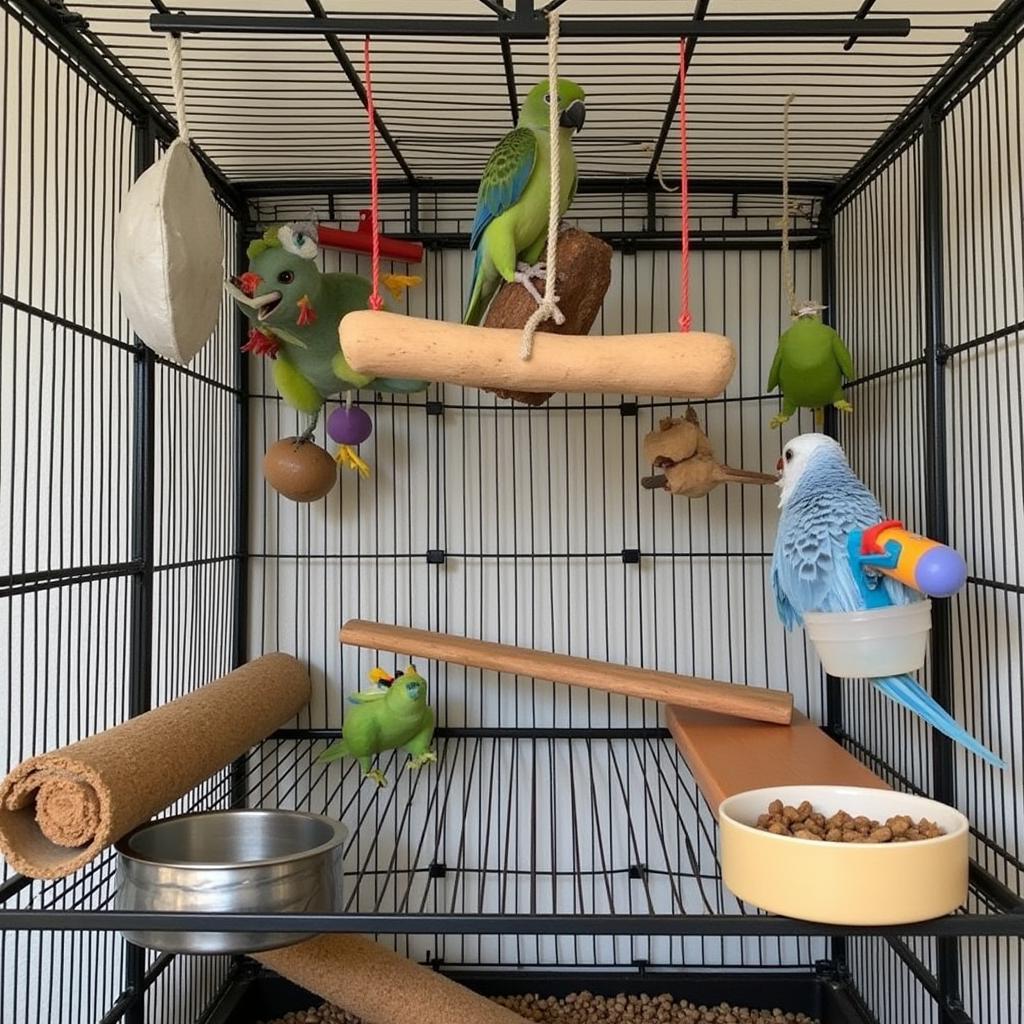African Grey Temperature Tolerance: A Comprehensive Guide
African Grey Temperature Tolerance is a crucial factor for parrot owners to understand. Maintaining the correct temperature range is vital for the health and well-being of these intelligent and sensitive birds. Ignoring their temperature needs can lead to serious health problems and a decline in their quality of life.
Understanding the Ideal Temperature for African Greys
African greys, originating from the warm, humid forests of Central and West Africa, thrive in temperatures significantly different from many household environments. Their ideal temperature range lies between 70-80°F (21-27°C). This range mimics their natural habitat and allows them to function optimally. Temperatures outside this range, particularly prolonged exposure to cold or excessive heat, can stress their immune systems and make them susceptible to illness.
Protecting Your African Grey from Extreme Temperatures
Maintaining a stable temperature is essential, avoiding sudden fluctuations which can be just as harmful as consistent extremes. Drafts, direct sunlight, and proximity to heating or cooling vents should be avoided. During colder months, providing supplemental heat sources like ceramic heaters or bird-safe heat lamps can help maintain a comfortable environment. Always ensure these are placed safely and securely to prevent burns or accidents.
Signs Your African Grey is Too Cold or Too Hot
Recognizing the signs of temperature distress in your African grey is crucial for prompt intervention. A shivering bird, fluffed-up feathers, and lethargy are clear indicators of being too cold. Conversely, panting, holding wings away from the body, and restlessness suggest overheating. If you observe any of these signs, take immediate action to adjust the temperature and consult a veterinarian if the symptoms persist.
The Importance of Humidity for African Greys
Temperature tolerance in African greys is intricately linked to humidity. These parrots are accustomed to high humidity levels in their natural environment, ideally between 60-80%. Low humidity can lead to respiratory problems, dry skin, and feather plucking. Maintaining appropriate humidity levels can be achieved through the use of humidifiers, regular misting, or providing shallow dishes of water in their cage.
Dr. Evelyn Nkonge’s Perspective on African Grey Care
Dr. Evelyn Nkonge, a renowned avian veterinarian specializing in African Grey parrots, emphasizes the importance of environmental control: “Maintaining the right temperature and humidity is not just about comfort, it’s about preventing illness and promoting a long, healthy life for your African Grey.”
Creating a Comfortable and Safe Environment
Beyond temperature and humidity, a comfortable and enriching environment is critical for the well-being of your African grey. Provide a spacious cage with plenty of toys and perches to encourage physical and mental stimulation. Offer a varied and nutritious diet and ensure access to fresh, clean water at all times. Regular interaction and socialisation are also essential for these highly intelligent and social birds.
Common Mistakes to Avoid
One common mistake is placing the cage too close to a window, exposing the bird to drafts and temperature fluctuations. Another common oversight is failing to monitor humidity levels, which can lead to health issues. Regularly checking the temperature and humidity with accurate gauges is essential.
 A Comfortable and Enriching Cage Setup for an African Grey Parrot
A Comfortable and Enriching Cage Setup for an African Grey Parrot
Dr. Nkonge also cautions against overcrowding: “Too many birds in a single cage can lead to stress, aggression, and difficulty in maintaining optimal temperature and humidity.”
Conclusion
Understanding and maintaining the correct african grey temperature tolerance is fundamental to responsible parrot ownership. By providing a stable, comfortable, and enriching environment, you can ensure the health, happiness, and longevity of your feathered companion. Remember, a proactive approach to their care is always the best strategy.
FAQ
- What is the ideal temperature range for an African Grey? (70-80°F or 21-27°C)
- What are the signs of overheating in an African Grey? (Panting, holding wings away from the body, restlessness)
- How can I maintain proper humidity levels for my African Grey? (Humidifier, misting, shallow dishes of water)
- Why is humidity important for African Greys? (Prevents respiratory problems, dry skin, and feather plucking)
- What are some common mistakes to avoid when caring for an African Grey? (Placing the cage near a window, neglecting humidity levels, overcrowding)
- What should I do if my African Grey shows signs of temperature distress? (Adjust the temperature and consult a veterinarian if symptoms persist)
- What is the ideal humidity range for an African Grey? (60-80%)
Related Articles and Further Reading
- African Grey Diet and Nutrition
- Enriching Your African Grey’s Environment
- Common Health Issues in African Greys
Need assistance? Contact us 24/7: Phone: +255768904061, Email: kaka.mag@gmail.com or visit us at Mbarali DC Mawindi, Kangaga, Tanzania.

